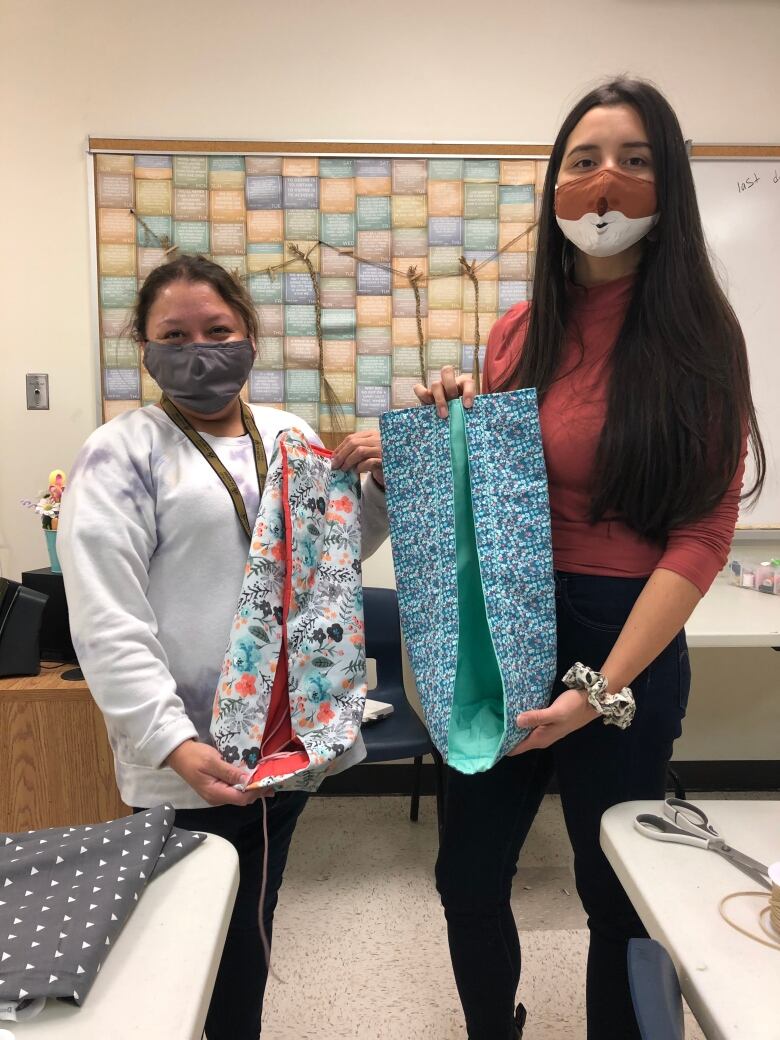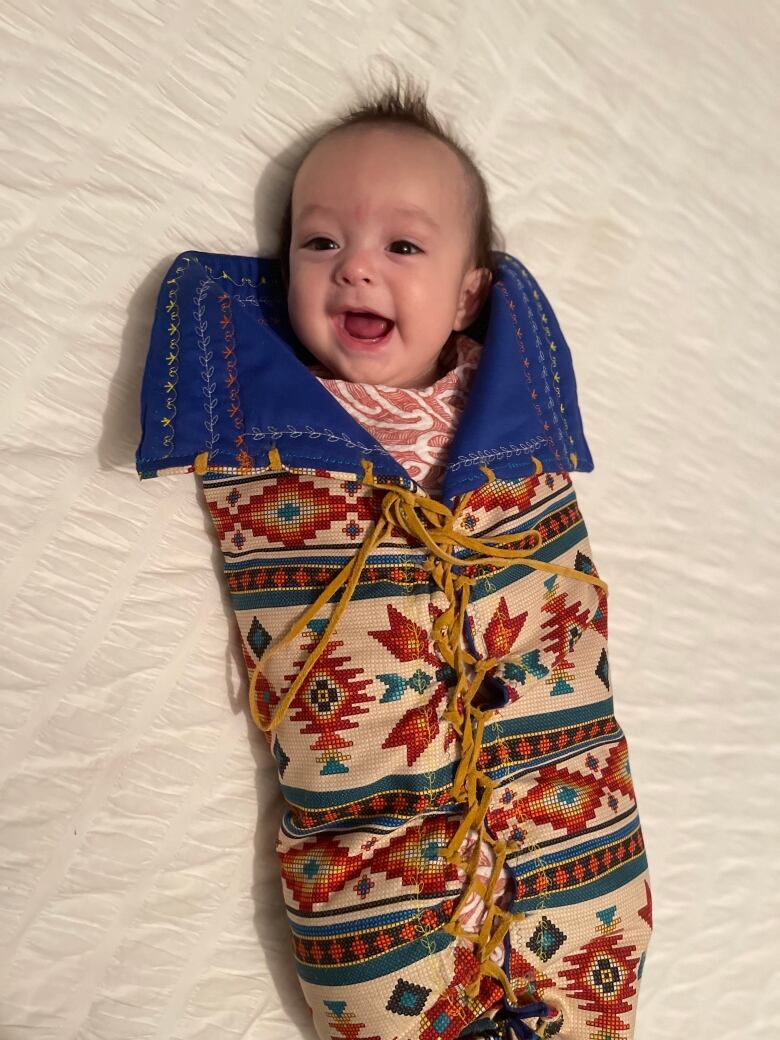Indigenous woman draws on oral teachings to revive traditional motherhood practices
Nina Kent is teaching women in Eskasoni, N.S., and beyond, how to make moss bags for their babies

An Anishinaabe woman living in Eskasoni, N.S.,ishelping women in her community reconnect to Indigenous motherhood traditions through workshops and teachings.
Nina Kent, an entrepreneur and artisan, learned about the traditions when she became a mother, thanks to oral teachings from her family.Now she wants to share them with as many mothers as possible.
Kent makesmany traditional Indigenous items, but key to her work with young mothers are moss bags.
"Traditionally, we've had moss bags around since time immemorial in Indigenous communities," she said in an interview.
Moss bags keep the baby warm and tightly wrapped in a womb-like space, which improves sleep.

Traditionally, the bagsheldmoss inside, which had medicinal properties andacted like a diaper. It was antiseptic and absorbent, keeping the baby dry and rash-free.
Today, a soft materialor blanket is used to swaddle the baby on the inside, and the outer layer can be any kind of breathable fabric. Leather can be used to lace up the front.
On the outside, some moss bags have ribbon patterns and beadwork on them, while others may have patterns or a solid colour design.
Self-taught
It wasn't until she was gifted a bag byher sister when Kentbecame a mother herself 4 years ago that she learned how to make them.
Many Indigenous ways have been lost due to residential schools, oppression of language and history. But Kentreached out to an elder in her community andher parentsto learn more about them.
Her parentstold her she grew up in a moss bag herself.
Kent saidthat if she had never reached out to anyone to find out about the history of the bags, she would have never have known its significance, and that could be the case for many other Indigenous mothers.
"I think it's something that's really important to share and make sure that every Indigenous mother knows how to make one for their child."

When Kent first tried to make one fouryears ago, she asked a family member to teach herover the phone, but it was complicated. So, she took apart the one she had and created a pattern out of it.Over the years she began making them for people and one day she was asked to host a workshop.
Thanks to public health measures imposed during the pandemic, thein-person workshops had to be smaller groups.
In February 2022, she decided to host aworkshoponline over zoom. It was successful and she has since been contacted by communities outside Nova Scotia to host other workshops.
Kent saidthework is very rewarding forher, andshe was thanked by Mi'kmaw Elder and Knowledge Keeper Jane Meader from MembertouFirst Nation for her work in bringing these teachings back toUnama'ki.
Babies sleep better
One of the women who had taken her in person workshop was Kate Jadis fromEpekwitkFirst Nation.
Jadishas been living in Eskasoni since 2007. She had beenfriends with Kent prior to taking hermoss bag workshop, but didn't make one for her own children until two years ago, though she didswaddlethem.

"They slept better...they slept longer, they just loved being swaddled," said Jadis.
She said having Kent bring these teachingsto Mi'kma'ki has been important.
"Because that's how it used to be, traditionally. Mothers would help one another."
Reclamation of traditions
Jadis saidthe ability to make moss bags is about bringing back traditions.
It's something that shecan share with other mothers and will continue to pass on.
She said that reclaiming these traditions helps Indigenous mothers embrace their culture, and that they shouldn't be ashamed about wanting to keep their babies close for both the children's comfort and their own.

"That's the first voice that our children are hearing, is their mothers, and the comfort comes from being close to their moms," she said.
"Making them [moss bags] is allowing us to have those conversations again with grandmothers, aunties and mums...about bring that tradition back."
with files from Mainstreet.












_(720p).jpg)


 OFFICIAL HD MUSIC VIDEO.jpg)
.jpg)



























































































